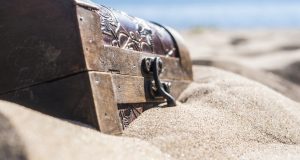
“FREETOWN IS very different to our home town of Chinchilla in Queensland,” say Russell and Robyn Porep, who have just finished six months of service as volunteers with Mercy Ships in the West African nation.
Robyn worked as a physiotherapist on the Africa Mercy, the world’s largest charity hospital ship which has six operating theatres, a 78-bed hospital and equipped with state-of-the-art equipment.
Russell, a marine engineer who had worked in Operations and Maintenance at Queensland power stations for 27 years, served with the ship’s engineering department.
The Africa Mercy is on a ten-month assignment to Sierra Leone, one of the world’s poorest nations.
“Walking to the centre of town from ship is quite an experience, very different to that at home,” says Robyn.
“I followed a young woman carrying a large plastic bowl on her head.
Draped over the edge of the bowl for potential customers to see were small sachets of washing powder.
She was just one of many people walking around trying to sell their wares displayed colourfully on their heads.”
“A bright green lounge was being pushed down the centre of the road in a two-wheeled cart.
A large pile of shoes for sale was stacked against a wall.
Big potholes in the road were filled with muddy rain water.
Trucks, cars and people squeezed along the road between market stalls spread out on plastic sheets.
Sewage and water ran through deep gutters, and rubbish was piled high.
I cannot describe the smell.”
The couple served a number of years ago on the Operation Mobilisation ship Doulos, and knew something of life in countries of the developing world.
They had a strong desire to do more missionary work, and believed Mercy Ships was where God wanted them to be.
“I was surprised how poor Sierra Leone is,” says Robyn.
“The long civil war caused great damage to the country’s infrastructure.
You cannot go anywhere without being confronted by the extent of poverty and the desperate needs of the people.
People who came to the ship’s hospital and dental clinics had lived with deformities, disabilities, pain and often isolation from families for so long.
It is difficult for our western minds to comprehend.
“So there was another wonderful experience, that of being part of a team, part of a body functioning together providing quality medical care.
We were playing a small, but significant part in allowing the light of Jesus to shine in Sierra Leone, bringing hope and healing to some of the world’s poorest.”
But it was the life-changing surgery and treatment for people Robyn worked on as a physiotherapist that provided the most lasting memories of the experience in Sierra Leone.
The story of one boy Sahr was typical.
“Sahr was born some time in the mid 1990s in a village of northern Sierra Leone. His legs were either misshapen at birth or the result of a congenital disease.
Below the knees his legs angled out, his ankles were parallel to the floor and walking was difficult and painful.”
“The boy’s mother left him shortly after birth, possibly to escape from being labelled as a demon for giving birth to a child with deformed legs. He was cared for by his stepmother after Sahr’s father was killed by rebels during the civil war.
“Volunteer doctors performed several complicated surgeries to repair Sahr’s legs, using pins to help his legs become straighter as he grows.
He was delighted to be a Mercy Ships patient.
For the first time in his life his needs were being supplied. There was a clean bed, three meals a day, caring nurses and the best of medical care from some of the world’s finest surgeons.
After five months of treatment, Sahr went to live at the Mercy Orphanage in Freetown.
He will attend a local private school, thanks to a scholarship donated by a couple of Mercy Ships volunteer crew members.”
Although Russell was not directly involved in providing such medical care as Robyn, he says there was great satisfaction knowing that maintaining good engineering and keeping the ship operating, is essential to ensure life changing surgery can be provided to the poor.
Photo : Robyn Porep with one of her patients, Sahr, who spent five months recovering from surgery to straighten both legs.
 JourneyOnline
JourneyOnline






